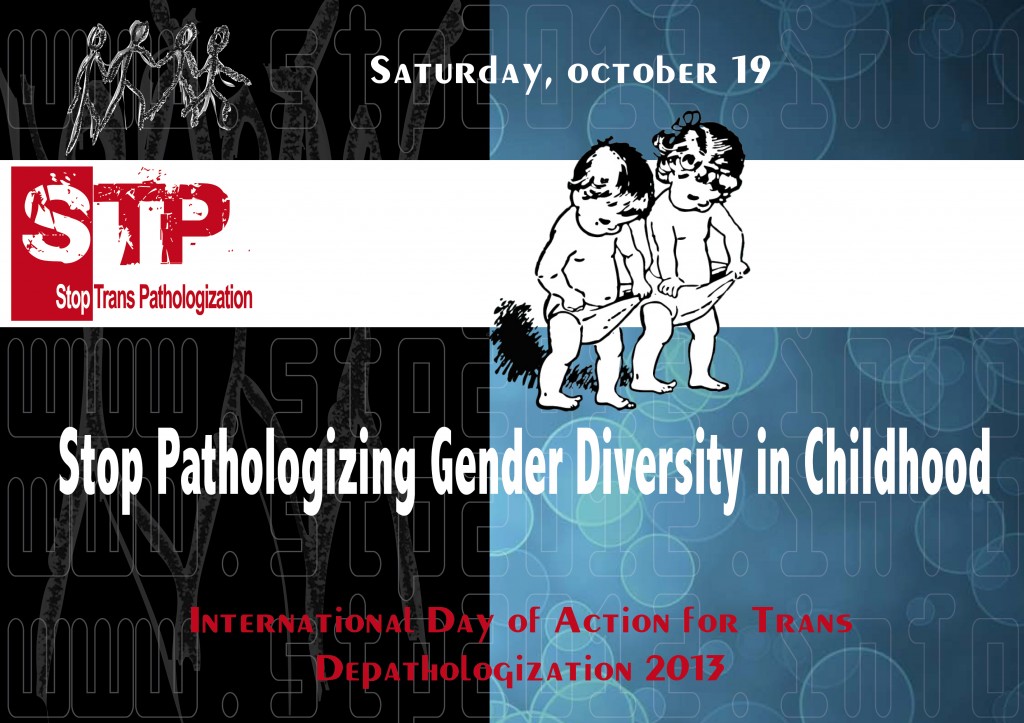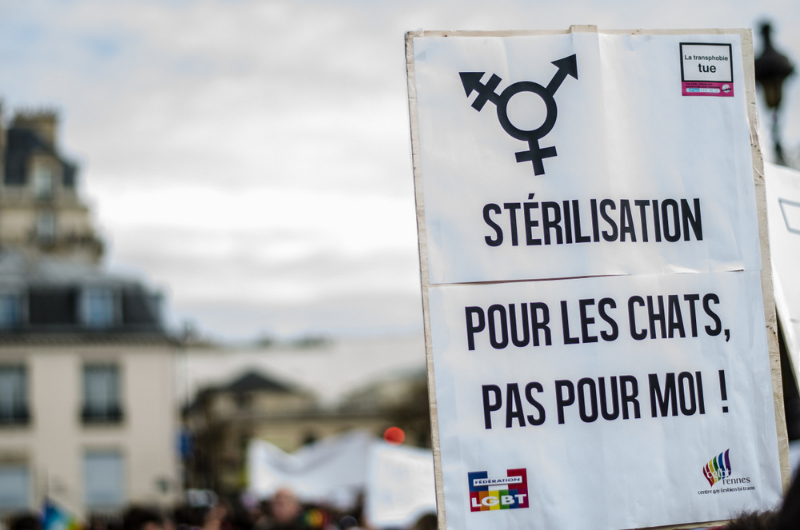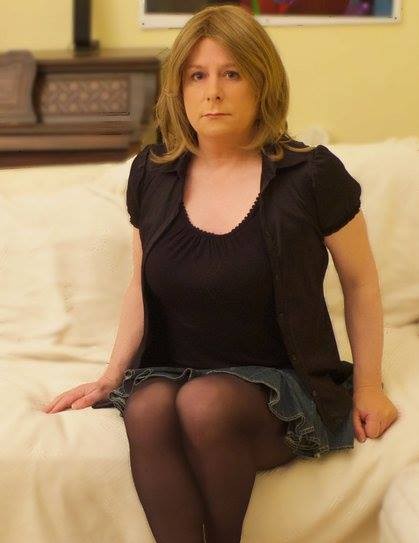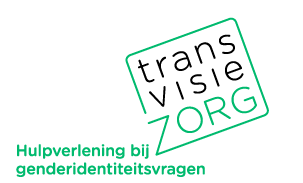October 19, 2013 is the international day on the depathologisation, declaring not a disorder but a positive diversity, of trans people. And because of high level developments in the World Health Organisation, that is responsible for revising the International Classification of Diseases, that is used for understanding what is a sickness, a disease, a disorder – be somatic or psychological. This is a global Classification – unlike the DSM that is still mostly US based but having a wider use. Here in NL psychologists use it, health insurers use it. For adolescents and adults there is a positive change going on, although the battle is not yet won. Because of this last issue, introducing a diagnosis for children, and 2014 being a decisive year for the new ICD, the pathologisation of trans children has been chosen as the theme for this year.

The suggestion for a theme usually comes from Spain where the campaign started in 2009. It was the time that the process to change the DSM started and they started to create global awareness for the changes. After all: the DSM still declares trans* people having a mental health problem. And when the process to change the ICD got under way, this had been taken into the campaign. Nowadays a strong focus of advocacy for trans health lies in getting a good description in the ICD-11. Since that will be decisive for how many people in the medical and political world will see us. If trans people are not (mentally) ill, but instead suffer from society, we will be taken more seriously. So that is why today and why the theme.
What is today about?
I will first define the situation: gender kids are not welcome as who they are, most learn to hide very early in life. I have recent data from the UK on that. Next I will give an overview of several developments in the social and the medical world. I will focus on how the big international classifications that are in use. By that I mean the infamous Diagnostic Statistical Manual of menatl disorders (DSM, version 5) of the American Psychiatric Association (APA) and the global, more responsible International Classiication of Diseases (ICD, version 10) of the World Health Organisation (WHO). Developments there are going in the wrong direction. And that has pretty much to do with it being children and with queerphobia.
Also I will give an update on developments in the Netherlands; what support is there, how are parents reacting? What does the clinic do? What would be good ways to advance our case for gender freedom?
Trans*
To start with trans*: this is not just transgender in the transitioning variant. It can surely mean transgressing gender norms, being and behaving gender non conforming. Because trans* is who trans* does. In a way many of you are also trans*: you do trans*, you transgress gender norms. Don’t come to me “Hey, but I’m fine with my body”. That is just one version of gender diversity, of trans*. Being trans* does not require gender dysphoria or gender incongruence or however you call it. And trans* is not just identity, it is also expression. Since so much what we all gay or lesbian or bi, is more gender expression than sexual orientation or gender identity.
So trans* can be anything non gender conforming. And acceptance for that already is quite low for kids. While the Netherlands may be relatively tolerant of it, and many young parents seem to be, recent UK data show that also the seemingly more accepted tomboy behaviour of girls and non apparent trans boys is not really accepted. Non-apparent then stands for people who later in life tell to be trans already from early on but didn’t tell anybody back then.
Kids
And by kids I mean children before puberty hits them, which roughly mean between 10 and 12 years old. Usually one says: puberty starts with Tanner stage 2. Then physical changes start appearing. In the Netherlands that gets ever earlier, and in several other countries also.
Although it is a generally accepted idea that children change, that change and development are the core phenomena of a child’s life, many implicit norms govern this period. A good example is that there is an Amsterdam kindergarten where children of many gay and lesbian parents spend their day. The personnel are very happy with the lesbian and even more with the gay parents. However all the kids are neatly divided in boys and girls and treated differently. I think this has much to do with idea that being gay and lesbian is seen as only a relationship thing, a sexuality thing, something private. Gays can be great parents also! But this goes completely beyond the point that so much is gendered behaviour, based on gender identity and/or expression.

ICD
It is clear that the Committee that manages the chapters relevant to trans people is convinced gender identity issues must be relabeled en get a different position. The name is in the process of being changed from “Gender Identity Disorder” to “Gender Incongruence”. A mismatch between body and felt identity. That is better already, better also than Gender Dysphoria. But:
- Why must there be such a diagnosis? The gender identity is not wrong, just different.
- Being non trans*, the default situation of being cisgendered, still is the definition of Normal
-
A new diagnosis is being introduced that concerns trans* children. So a child living differently is still bad, wrong
It is the WHO that decides through scientific research what is to be considered a sickness, illness or disorder. Everything health related is in their remit. For the description of diseases etc. there is the International Classification of Diseases, ICD for its abbreviation. It is going to version 11 now, after the longest time between versions. ICD-10 is from 1990 and got in to function in 1994. Since 20 years is a long long time, the changes will be drastic, and many things will change: biomedical sciences have advanced enormously and everything may be streamlined more than before. So it will also be in things transgender related.
But the WHO is not only purely scientific and apolitically health care related. LGBTI issues face enormous contention from the usual suspects of human rights refusers for LGBTI people: the Vatican, the African group Russia and some consorts, several countries united in the Organisation for Islamic Cooperation. Recently there was to be a discussion about discussing LGBTI health issues and the issue got removed form the agenda thanks to pressure from these countries. For now the tendency within WHO is to declare it a technical issue and remove it from the agenda because of too fierce resistance.
Trans identity issues are now going from the horrible: Gender Identity Disorder” to most probably “Gender Incongruence”. The DSM 5, that American horrible psychiatric classification uses gender dysphoria. Incongruence is the least harmful term of the three, but still does not take its departure in gender diversity with all gender identities equally valid. So tis still not good. Gender dysphoria means one has lots of stress, anxiety, depression because of ones trans identity. Which is another case of wrong angle: it is not the identity in itself that causes so much trouble, it is how the world reacts and how one learns to look at it. And you know already quite young if it is OK to live like you feel. Which is why many trans people only come out later in life. Lucky the people who have enough to support to come out young. And can more or less freely develop their identities.
Gender Incongruence only means that your body and your identity do not match, are not congruent. But that still is not good enough of course. It is doable and better than dysphoria, but still.
The bad new thing for this Classification is that suddenly trans kids*, those who are not adolescents, the K-12 kids, need a separate, autonomous diagnosis of their Gender Incongruence. It will then be called, gender incongruence in children. But there are a couple of strange or incorrect things with this.
An important detail to add is that the proposal is to have the diagnosis onl apply to those children with severe complaints. Not every kid with a non traditional gender expression would fall under it. Only those whith “severe incongruence” as I imagine the wording might be. The fear for gendernon conforming behaviour seems to lessen in these circles. because they aslo say this with adults adn adolerscents, lready in the DSM-5.
First and foremost: they are sort of de-pyscho-pathologising adults. Because adults will be in a separate chapter for gender identity stuff, or in a chapter on sexual health. Not any more in the current chapter (F.64) of mental and behavioural disorders. But since children below puberty cannot get puberty blockers, there is nothing medical with them, so diagnosing them is diagnosing their – changing and developing – identity, means putting them with mental health issues.
When there is nothing medical, there is no need for diagnosing. So it is irrelevant. Surely since psychosocial support can be arranged through already existing constructions. This way a new class of experts and of treatment will be created. And once created, a specialism doesn’t want to close down.
Situation of trans kids according to research
Since this is all about trans* kids, it would be good to know a bit more about how they live, what their problems are. The problem is: there is only very little research in this. And most comes form the medical/psychiatric division of society. Not only that, it comes from researchers with a strong agenda for normalization. A name to remember in this is Kenneth Zucker from Toronto. In Berlin, Germany there is professor Klaus Beyer working with trans* kids who also has clearly non respecting ideas. Don’t get your kids to the Charité hospital in Berlin if they are queer.
The problem with Zucker and his pal Richard Green is their disrespect for the autonomy of trans people. Green is the author of “The sissy-boy syndrome”. He is Zucker’s predecessor and together they try to make a strong case for reparative therapy. This means: attempt to -de-transgender the kids, to un-gay them. Because gay and trans is Wrong. And trans is worse than gay (that is at lest within the gender binary). In the Netherlands people like these do not work at the gender clinics, but they might run loose as independent psychiatrists. Which might be even more dangerous: if the parents don’t know about the gender clinic’s youth program or better about Transvisie Zorg, the child might suffer much.

From recent UK research by Natacha Kennedy we know that of the respondents to an online survey most were ‘non apparent” trans kids. That is: they felt different already early in life but came out far later because they knew it was not considered a good thing to be trans. Already at age 8 the social radar of all children is god enough to realize this. There is no majority of one type of trans* in this research: the respondents have come out as cross dressers, transgender, genderqueer, mixed gender. The consequence of this feeling already quite young to be apart, different form the others leads to the feeling of not being able to live as one wants, to invest a lot in a gender identity that is not one’s own.
That does not have to contradict our cherished idea that gender is doing. It appears many people who live one thing, slurp, suck in what they are actually more interested in. To quote Butler in this: “Femininity is thus not the product of a choice, but the forcible citation of a norm, one whose complex historicity is indissociable from relations of discipline, regulation, punishment.” (Bodies that matter). Anyone wonder about the appearance of “gender dysphoria” then?
This nonrecognition of gender diversity is something seemingly universal. Surely here in the Netherlands the idea of gender expression is not very developed in general discourse.

Support
So what is there in support? As it is said the Netherlands is doing very well in medical support for adolescents, the question of course is: what is there for the young one? Well, there is support from Transvisie Zorg that have a social worker and a sexologist who see the parents, visit schools, talk to schools, see the kids if they want. Most of their work is with the adolescents, but a growing number of parents call for support. Their list of visited schools grows at 40 schools per annum!
The most common phenomenon roughly from 10 on, is bullying. More girlish boys than boyish girls get bullied. However every school got protocols against bullying. When talking with schools Transvisie points at bullying and the need prevent this, but it is mostly up to the kid and their parents to go to school and tell the staff they get bullied.
And then there is the gender clinic that gives “temporary” diagnoses. Precisely in the idea the ICD want s to have that diagnosis: to make it easier to enroll in the adolescent program. How good the support is, depends very much on the quality and opinions of the psychologist.